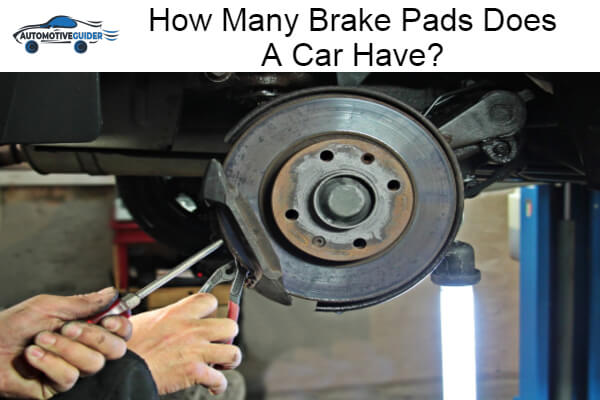How Many Brake Pads Does A Car Have? Full Information
Brake pads play a crucial role in the braking system of a car. They are the components that create friction against the brake rotors, enabling the vehicle to slow down or come to a complete stop. If you're curious about the number of brake pads your car has, read on to find out!
1. How many brake pads does a typical car have?

NLP Answer: The number of brake pads in a car depends on the type of braking system it has. Most cars have four brake pads, with one set for each wheel.
Expert Answer: A typical car has four brake pads, as there are generally two brake pads per wheel. This is because cars are typically equipped with a disc brake system, which consists of brake calipers, rotors, and pads. Each wheel has a rotor, and the brake caliper houses the brake pads that come into contact with the rotor when you press the brake pedal. The friction created between the pads and rotors helps decelerate the car. Therefore, a car equipped with disc brakes will have a total of four brake pads.
Additional Information:
- Some high-performance or larger vehicles may have more than four brake pads to ensure better braking performance and heat dissipation.
- Brake pads are typically made of materials such as ceramic, semi-metallic, or organic compounds.
- Regular inspection and maintenance of brake pads are essential to ensure optimal braking performance and safety.
2. How often should brake pads be replaced?
NLP Answer: The frequency of brake pad replacement depends on various factors, including driving habits, road conditions, and the type of brake pads used.
Expert Answer: Brake pad replacement intervals vary, but as a general guideline, brake pads should be replaced every 25,000 to 70,000 miles. However, it's important to consult your vehicle's manufacturer guidelines and recommendations, as well as have them inspected regularly by a qualified mechanic. Factors such as aggressive driving, stop-and-go traffic, and driving in hilly areas can accelerate brake pad wear. Additionally, different brake pad materials have different lifespans, with organic pads generally wearing out faster compared to ceramic or semi-metallic pads. Regular inspection and monitoring of brake pad thickness are crucial to determine when replacement is necessary.
Additional Information:
- Warning signs of worn-out brake pads include squealing or grinding noises, reduced braking performance, and longer braking distances.
- It is advisable to replace brake pads in axle sets (both front or both rear) to maintain balanced braking performance.
- Consult your vehicle's owner manual or a professional mechanic for specific brake pad replacement recommendations for your car model.
3. How can I diagnose worn brake pads?

NLP Answer: Diagnosing worn brake pads can be done by observing potential signs such as squeaking noises, reduced braking performance, or visual inspection of the thickness of the brake pads.
Expert Answer: There are several ways to diagnose worn brake pads:
- Noise: If you hear squeaking, squealing, or grinding noises when applying the brakes, it could be a sign of worn brake pads. The noise is produced by the wear indicator, a small metal tab embedded in the brake pad, designed to make noise when the pad thickness becomes too low.
- Braking Performance: Reduced braking performance, such as longer stopping distances or a "soft" brake pedal, can indicate worn brake pads and decreased friction.
- Visual Inspection: You can visually inspect the brake pads through the wheels or by removing the tires. If the pad thickness is near or below the minimum recommended thickness, it's time to replace them.
Additional Information:
- It's recommended to have a professional mechanic perform a thorough inspection if you suspect worn brake pads.
- Ignoring worn brake pads can lead to decreased braking efficiency, rotor damage, and potential safety hazards.
- Regular maintenance and inspections can help detect worn brake pads before they cause severe damage.
Overall Article:
Brake pads are essential components of a car's braking system, providing the friction necessary to slow down or stop the vehicle. Understanding the number of brake pads, their lifespan, and how to diagnose wear is crucial for maintaining optimal braking performance and safety. Here are the answers to some frequently asked questions about brake pads:
- How many brake pads does a typical car have? (Answered above)
- How often should brake pads be replaced? (Answered above)
- How can I diagnose worn brake pads? (Answered above)
- What are the different types of brake pads available?
- Can I replace brake pads myself, or should I seek professional help?
- Are there any alternatives to traditional brake pads?
- How do I properly break-in new brake pads?
- What are the signs of brake pad failure?
- What are the consequences of driving with worn brake pads?
- What other brake components should I inspect during regular maintenance?
- How can I extend the lifespan of my brake pads?
- Are there any safety tips for maintaining brakes?
By understanding and addressing these common concerns, you can ensure your car's brakes are in optimal condition, promoting both safety and performance on the road.
